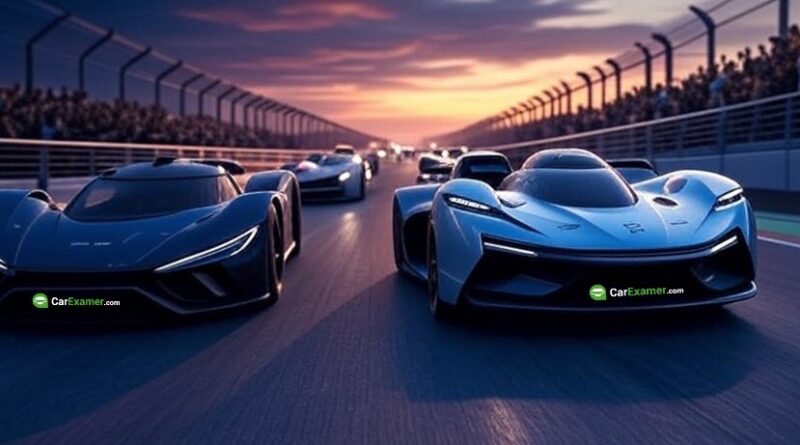China’s BYD and Great Wall Motor Clash Intensifying Car Price War
China’s auto industry is experiencing a major transformation, and at the center of this shift are two of the country’s top automakers: BYD and Great Wall Motor. Both have risen as key players in China’s booming electric vehicle (EV) market, but their rivalry is intensifying as a nationwide price war escalates.
This article explores the growing conflict between BYD and Great Wall Motor, the causes behind the price war, and its impact on the Chinese and global auto industry.
A Crowded and Competitive Market
China remains the world’s largest car market, with more than 20 million vehicles sold annually. The rise of electric vehicles, along with heavy state support, has created a landscape where dozens of manufacturers now compete for attention.
But overproduction, increased competition, and price-sensitive consumers have pushed automakers into a pricing battle that threatens profit margins and business models alike.
BYD: The Dominant Force
BYD (Build Your Dreams) has surged ahead in the EV market thanks to strong domestic sales and international expansion. Its unique advantage lies in vertical integration—the company produces its own batteries, chips, and many key vehicle components, keeping costs down.
- Focus: Mid-market and affordable EVs
- Strategy: Scale quickly, undercut rivals with aggressive pricing
- Recent Moves: BYD slashed prices across several models by up to 15% in early 2024
This price drop sent shockwaves through the market and forced other brands to follow suit or risk being left behind.
Great Wall Motor: Fighting Back
Great Wall Motor, best known for its Haval SUVs and newer ORA EV range, has taken a more targeted approach. With a focus on hybrids and SUVs, it aims to carve out a niche. But as BYD dominates sales volumes, Great Wall has found itself under pressure.
- Focus: SUVs, hybrids, and smaller EV segments
- Response: Legal action and public accusations against BYD
- Key Concern: Maintaining profitability in a falling-price environment
In 2024, Great Wall filed a formal complaint, accusing BYD of using non-compliant emissions systems in some plug-in hybrids—a move that turned a pricing rivalry into a legal and regulatory battle.
Escalation: Accusations and Counterclaims
The feud intensified when Great Wall Motor submitted documents to Chinese regulators, claiming that certain BYD plug-in hybrids did not meet national emission standards.
BYD quickly responded, rejecting the allegations and accusing Great Wall of trying to harm its reputation through “malicious competition.”
This rare and public dispute between two major Chinese automakers revealed the deeper tensions caused by the ultra-competitive environment.
Why Is There an Auto Price War in China?
Several factors are contributing to the ongoing price battle:
- EV Subsidies: Government incentives have supported rapid EV growth.
- Overcapacity: Automakers have built more cars than the market demands.
- Tech Advancements: Cheaper batteries and improved production reduce costs.
- Consumer Trends: Buyers expect high-tech features at increasingly lower prices.
- Global Ambitions: Brands like BYD are using domestic scale to fuel overseas expansion.
Impact on Consumers, Rivals, and the Global Market
For Chinese Buyers:
- Lower Prices: Good for short-term deals and discounts
- Potential Risks: Quality and after-sales service may suffer if margins are too thin
For Foreign Car Brands:
- Competition is fierce, especially in the EV segment
- Traditional carmakers may struggle to match China’s price-performance ratio
For Investors:
- Rising uncertainty, market volatility, and potential consolidation on the horizon
What’s Next?
As the price war deepens, questions are emerging about the long-term sustainability of China’s EV ecosystem.
- Will only the largest and most integrated players survive?
- Could more legal disputes or regulatory battles follow?
- What role will international markets play as Chinese brands expand abroad?
With BYD currently holding the advantage thanks to its scale and cost efficiency, the pressure is on Great Wall and others to innovate or consolidate.
Conclusion
The BYD vs. Great Wall Motor clash is more than a corporate rivalry—it’s a case study of the high-stakes challenges facing China’s entire automotive sector. As EV adoption accelerates and price pressures mount, the choices these companies make will shape the future of the global auto industry.
Buying a used VW. Buying used vauxhall, BMW, Jaguar, Ford, Volvo, Range rover, Bentley, Aston Martin, Porsche, Ferrari, Lamborghini, Maserati, Hyundai, Tesla, Honda, Pagani

